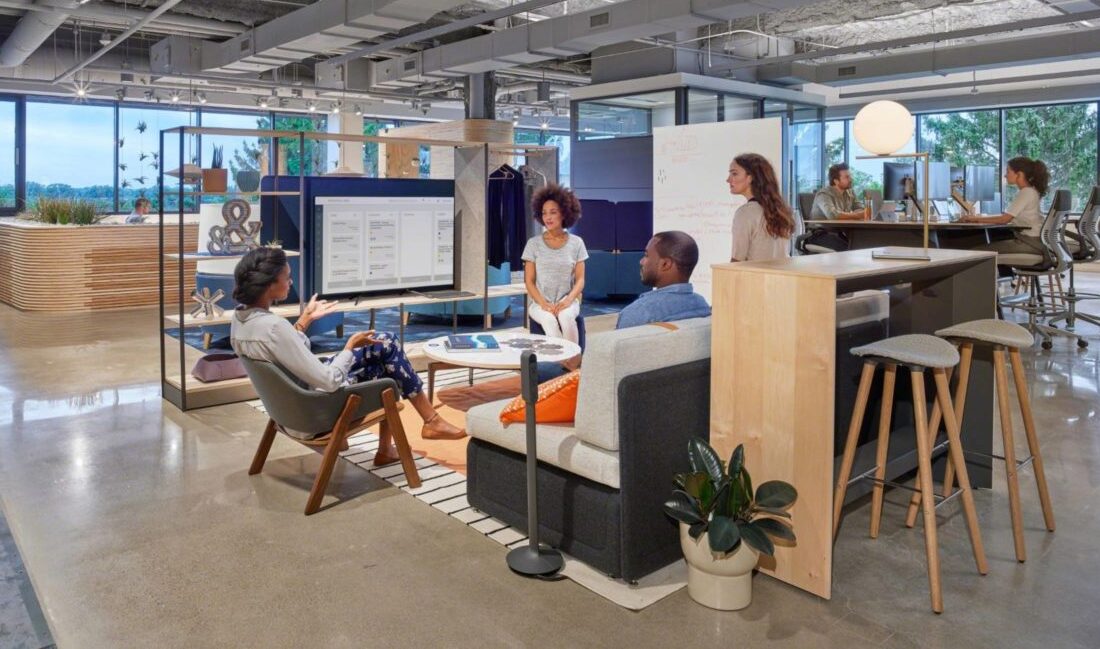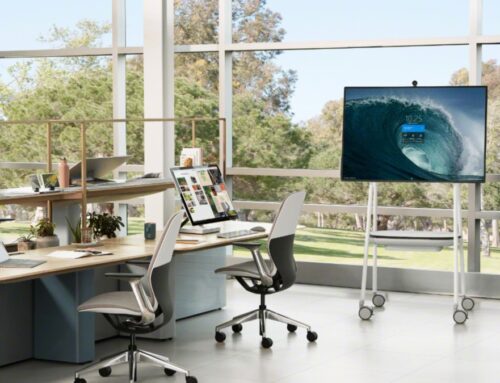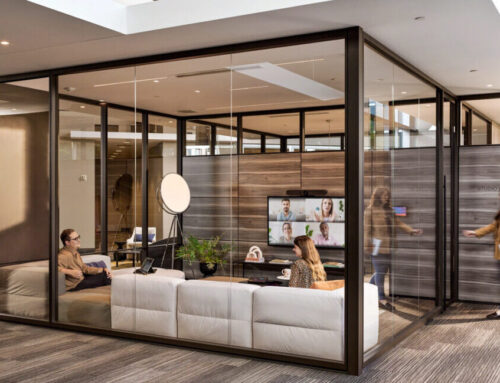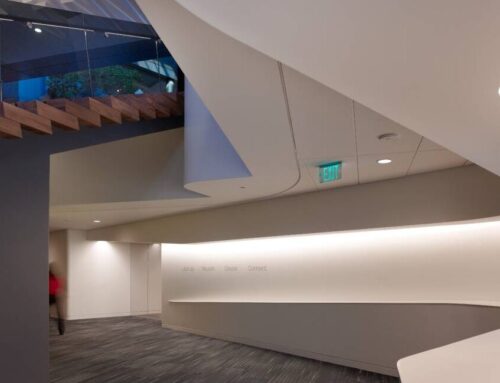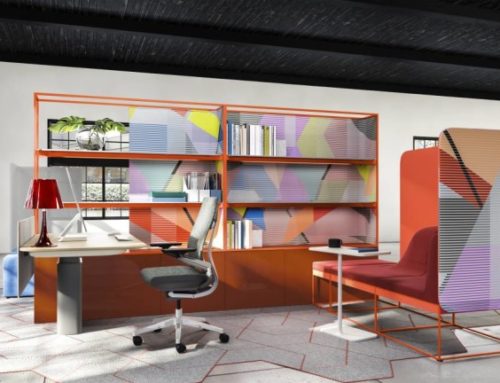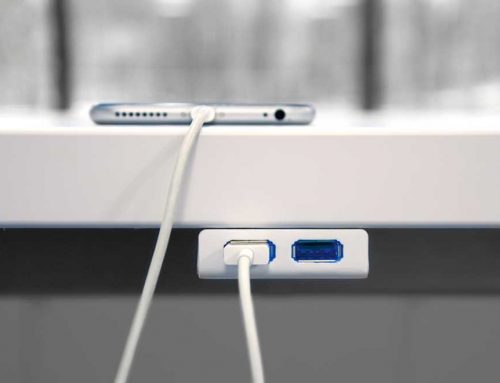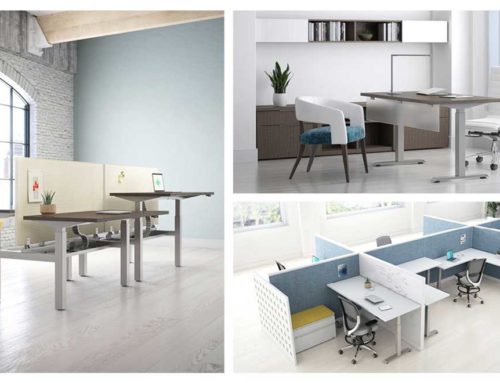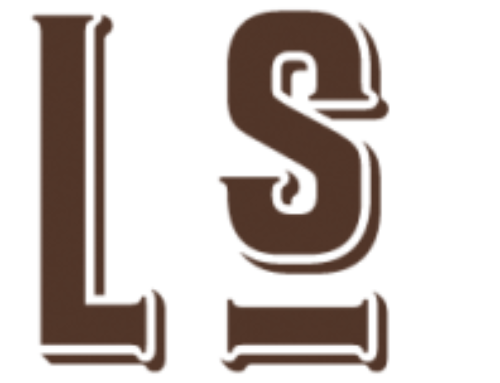Digital transformation requires a much closer connection to the customer and the ability to innovate and execute quickly. Forrester recently reported if companies don’t reinvent with technology at the core, they will watch customers defect. In essence, the business will suffer if organizations don’t figure out how to reinvent and redefine the work of information technology groups so that they can get closer to their customers. A successful transformation requires a holistic approach that considers people, process and place.
Steelcase, like many organizations, is undergoing this transformation, developing an evolving vision for its business and IT team.
A new team-based workspace created in it’s Grand Rapids, Michigan Global Business Center is the outward manifestation of a complex change. It isn’t just about creating the kind of space that attracts technology workers (although it does), it’s about using the space to support agile processes and foster a more agile culture among the 400 IT professionals at Steelcase in Grand Rapids.
The new Steelcase IT work environment was designed to foster a more agile culture that will help technology workers get closer to the customer and innovate more quickly.
There’s a lot about this journey that makes it unique. Leaders and teams have had an unprecedented depth of involvement. Learning has been conscious, intentional and codified. The amount of prototyping has been significant, and the engagement processes have been comprehensive. From discovery to measurement, the entire company is learning deeply, and in the spirit of agile work, sharing new insights even as they evolve.
“We didn’t start with agile. We started with a new perspective for IT — to be a better business partner for the organization and to become customer-centric. We discovered that agile aligned with those aspirations.”
Digital transformation requires a much closer connection to the customer and the ability to innovate and execute quickly. Forrester recently reported if companies don’t reinvent with technology at the core, they will watch customers defect. In essence, the business will suffer if organizations don’t figure out how to reinvent and redefine the work of information technology groups so that they can get closer to their customers. A successful transformation requires a holistic approach that considers people, process and place.
Steelcase, like many organizations, is undergoing this transformation, developing an evolving vision for its business and IT team.
A new team-based workspace created in it’s Grand Rapids, Michigan Global Business Center is the outward manifestation of a complex change. It isn’t just about creating the kind of space that attracts technology workers (although it does), it’s about using the space to support agile processes and foster a more agile culture among the 400 IT professionals at Steelcase in Grand Rapids.
There’s a lot about this journey that makes it unique. Leaders and teams have had an unprecedented depth of involvement. Learning has been conscious, intentional and codified. The amount of prototyping has been significant, and the engagement processes have been comprehensive. From discovery to measurement, the entire company is learning deeply, and in the spirit of agile work, sharing new insights even as they evolve.
“Agile can be a confusing term as it’s used in different ways. It’s important to be clear when discussing agile and to understand what organizations are seeking to accomplish.”
Agile Manifesto Values put a higher value on relationships, working products, and embracing change than some of the things common to more traditional work processes. Agile values individuals and interactions over processes and tools, working software over comprehensive documentation, customer collaboration over contract negotiation, and responding to change over following a plan.
Agile Manifesto Principles elevate personal interactions and customer engagement during a time of digital transformation to improve the quality of solutions and speed of delivery.
01. Customer satisfaction by early and continuous delivery of valuable software
02. Welcome changing requirements, even in late development
03. Working software is delivered frequently (weeks rather than months)
04. Close, daily cooperation between business people and developers
05. Projects are built around motivated individuals, who should be trusted
06. Face-to-face conversation is the best form of communication (co-location)
07. Working software is the primary measure of progress
08. Sustainable development, able to maintain a constant pace
09. Continuous attention to technical excellence and good design
10. Simplicity – the art of minimizing the amount of work not done – is essential
11. Best architectures, requirements, and designs emerge from self-organizing teams
12. Regularly, the team reflects on how to become more effective and adjusts accordingly
Steelcase IT and product development teams are in different stages of adopting agile. Some are agile-focused, working on a single project and fully following the Scrum process. Others are agile-inspired, working on multiple projects or doing ongoing work and using new work processes that include a portion of the agile ceremonies and approaches.
“This project has created a sense of pride within IT because we were key consultants in the design, prototyping and implementation. It wasn’t done to us. It was done with us.”
Research, design, and Applied Research + Consulting teams led a series of activities to discover how IT teams were working and how they preferred to work to achieve their goals. A Workplace Advisor Study used sensors installed in the former workplace to measure and analyze how people were using their space. Findings included:
Space Study
- IT spaces were underutilized. Individual workstations, small group and large meeting rooms were all occupied less than 30 percent of the time.
- Most collaboration was happening in small or mid-sized groups. People reported collaborating half of the time.
- Video display and acoustical privacy were in high demand.
- While only 30 percent of IT team members were designated as mobile workers, an additional 45-50 percent of people demonstrated moderate levels of mobility.
- About 20-25 percent of IT exhibited low mobility, including people who were away from their desks for less than 30 minutes at a time.
“Having people engaged in influencing their workplace gives them a sense of authorship and ownership, and makes a big difference in accepting a new paradigm.”
These findings were combined with “day in the life” interviews where researchers asked different IT team members to walk them through their typical work day. The collection and synthesis of all of this information helped the project team delve into people’s challenges and expose what was working well and what was causing headaches.
Employee workshops were conducted to help people create a framework for their future work experience. For example, IT employees wanted to encourage learning across the department instead of keeping knowledge in silos.
“IT could not have adopted agile just by moving into a new space. User prototyping and consulting in the creation of space is the reason it succeeded.” Dr. Tracy Brower
The Steelcase Applied Research + Consulting team helped IT focus both strategically and tactically on managing the culture change required in a shift to agile work. The support intended to catalyze new behaviors and reflect IT’s guiding principles by creating user-centered experiences around change management.
Many of the activities were based on peer-to-peer activities which helped build community and trust and encouraged new behaviors within a changing landscape of work. Change Champions were selected from each IT area to learn about agile culture and practices and help with overall team adoption and behavior changes.
The approach to culture change used a variety of tactics to complement and build upon one another. A strategic approach looked at change management tactics through three different lenses including how people relate to each other, how they relate to their use of space and how they exchange information.
“This is an exciting time for us as leaders, our teams and our customers. Our transformation is unlocking a way for us to deliver more projects faster and offer greater value.”
Improved Velocity
Review of team dashboards shows a 40 percent improvement in velocity (amount of work completed during each Sprint) for agile teams operating within the new IT space. Teams forecast and track how many increments they can accomplish during a Sprint. The dashboards allow leaders to watch as the teams recast their velocity after each Sprint cycle.
“It’s dramatic. Once we move teams into the space, and the new process and behaviors are enabled, that’s when we see the jump,” says Miller. “It usually takes two Sprint cycles (four weeks) for us to see it once they’re in the space.”

While working in the user prototype, one agile team quickly experienced the benefits of the practice. The team’s velocity was struggling. During the retrospective following the second Sprint, they discovered despite practicing agile; they still were working in more traditional ways. People were stuck in their own “swim lanes,” and the entire team was still not located together.
The team added more height-adjustable work surfaces and tasked seating to their area and improved collaboration. A developer with a wide skill set overhead his teammates challenges and suggested he could “change lanes” and pick up the work. His offer followed one of IT’s guiding principles — “We Succeed as a Team.” The impact on output was evident. The team logged 49 points in Sprint two and 100 points in Sprint four, doubling productivity.
Ninety days after move-in, leaders performed a periodic review of how the space was being used. They believed it might be able to support additional teams. Analysis of sensor data allowed them to make a data-driven decision to move three more teams into the new space. Seven teams, in all, had to shift within the space. But, because the design accounted for future needs to expand and contract, IT did not have to make any facilities requests to account for the moves.
Agile Adoption
“The data helps us make sure the workplace is serving the people who work there while facilitating desired cultural changes. If we see areas for improvement in a week or in a year, we can make immediate changes,” says Michael Bloem, Ph.D., analyst, applied data science at Steelcase. “As work changes, the workplace can respond to the people living in it.”
For example, Bloem says they wanted to find out if agile language and concepts were being adopted throughout IT. They analyzed room reservation data that used terms like “agile” and “Sprint” over time. Data showed more than a two-fold increase in bookings using those terms — helping to confirm agile is becoming more ingrained in the culture and the work process.
Ongoing Measurement
The cross-functional team tasked with the IT project put together a measurement plan that accounts for the immediate, short and medium term. The team started with the IT guiding principles and clarified the behaviors that would be evident when the guiding principles are met. From there, they developed and implemented an array of qualitative and quantitative methodologies through which to measure these.
Change takes time, of course, so the measurement efforts continue as the team gains insights and makes ongoing improvements to the space. In true agile spirit, the space will never really be complete. In fact, a ribbon cutting was never held, symbolizing to the team that the project is ongoing. It will continue to evolve and shift as teams’ work changes and new learnings manifest.
AFD Contract Furniture is dedicated to keeping our customers and the industry up-to-date on important trends in the industry. The Agile development of Steelcase IT department provides a parallel to the way we help our clients create interactive and productive workspaces. Call one of our specialists today to find out more about Steelcase and check out how we might assist your company to more effectively work and interact.


